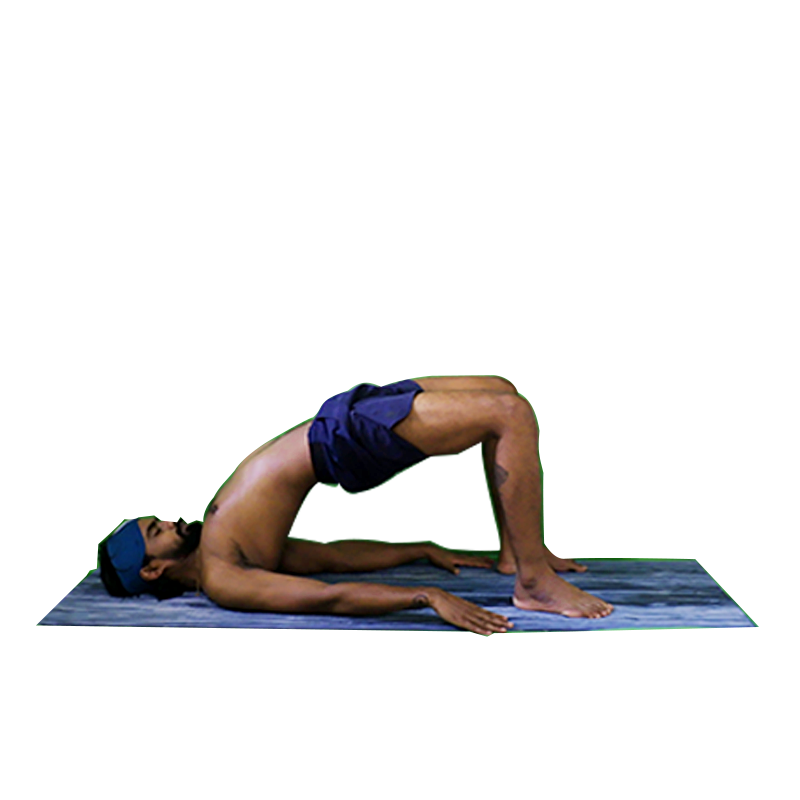Setubandasana (bridge pose)
The bridge pose ( Setubandhasana ) name comes from the Sanskrit, “Setu” meaning “Bridge”, and “Asana”, meaning “Posture”.
Table of Contents
- Steps with breathing
- Adjustments
- Benefits
- Contra-Indications
- Variations

Bridge pose Steps with breathing
1. Begin with a supine position, lie flat on the back with legs and feet together in a straight line. Place the hands and arms close to the body with the palms facing down.
2. Now, bend both legs from the knees, bringing the soles of the feet firmly placed on the mat.
3. Pressing the feet and palms firmly on the floor, with inhalation lift the hips toward the ceiling, push the tailbone upwards and while firming the buttocks, roll the shoulders back.
4. Maintain the final pose from 30 seconds to 1 minute. As you exhale, slowly lower the spine along the floor, vertebra by vertebra. Allow your knees to drop together and rest in Shavasana.
Adjustments
1. Heels closer to the tailbone.
2. Thighs are parallel and knees are perpendicular to the floor.
3. Squeeze the buttocks and lift the tailbone.
4. Keep both feet parallel to each other.
Variations
1. Hands supporting the waistline and lift the tailbone up towards the ceiling.
2. Catch hold of the ankles and lift the tailbone up towards the ceiling.
3. Interlace the fingers behind the back and lift the tailbone up towards the ceiling.
Benefits
1. This asana helps to realign the spine, by eliminating rounded shoulders and relieving backache.
2. It massages and stretches the colon and abdominal organs.
3. Improving digestion.
4. It also tones the female reproductive organs.
Contraindications
1. People who are suffering from peptic or duodenal ulcer.
2. Abdominal hernia should avoid this asana.
